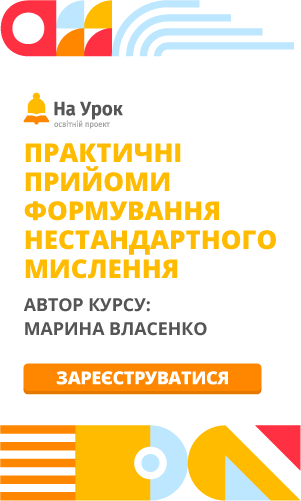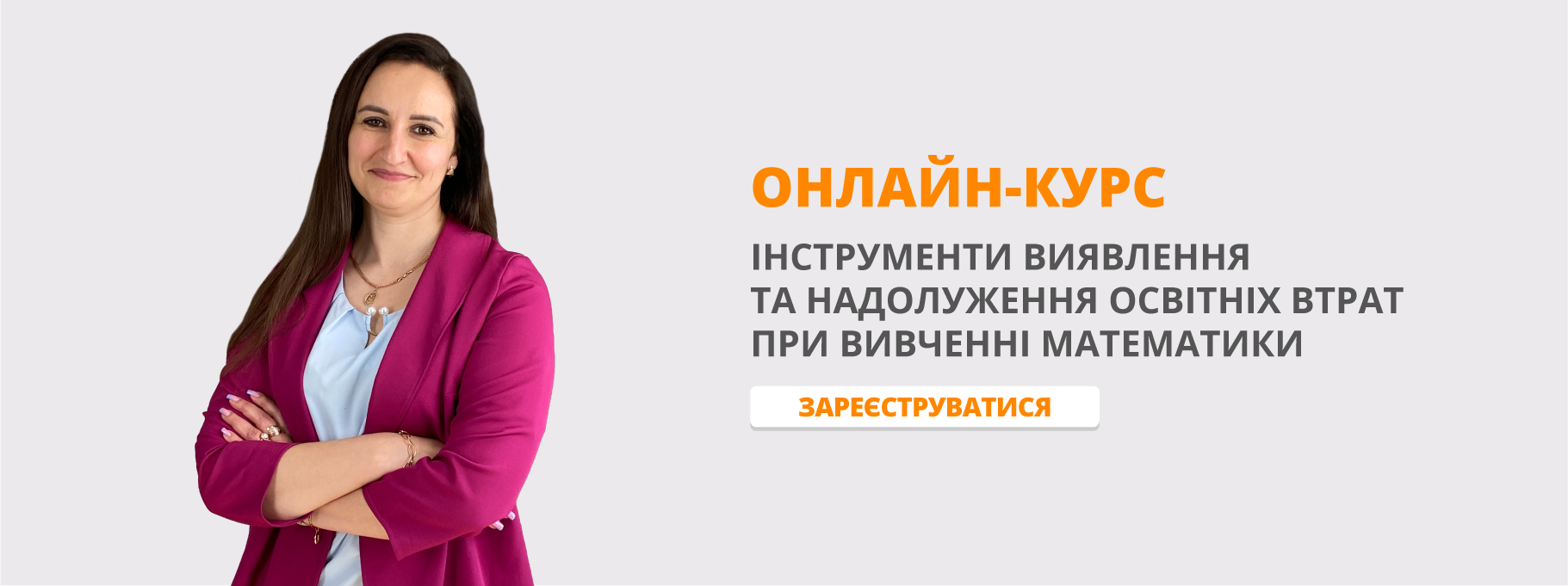Урок англійської мови CLIL у 10 класі з поєднанням елементів вивчення економіки за темою "Money"
|
Class: 10 |
Time 90 min |
|
Topic: Money |
|
|
Aims: -to increase students’ knowledge on the above topic -to learn new vocabulary -to practice 4 language skills: listening, speaking, writing and reading -to develop critical thinking skills |
|
|
Learning outcomes: By the end of the lesson the student will be able to: - use new vocabulary to tell about the history of money; - distinguish between concepts such as disinformation, misinformation, and mal-information and find fake facts; - analyze the information about the history of money; - present information in different ways; - create their own projects about different world currencies.
|
|
|
Content: Economics. History of money. |
Cognition: - define the concept of money - understand the meaning of the new words from the context - classify the information heard, - understand the function of money - identify fake facts
|
|
Communication: -past indefinite tense -vocabulary on the topic -strategies for listening and understanding the text - strategies for analyzing information and using it in the context
|
Culture: -to learn about the origin of money -analyze the information about the phases of financial system -understand the role of financial institutions and their influence on the development of the society |
|
Online resources: 1.”Money”, ABBA https://www.youtube.com/watch?v=ETxmCCsMoD0 2. Listening task https://www.youtube.com/watch?v=czEPG75wzPI 3. Definition of concepts: https://www.cliffsnotes.com/study-guides/economics/money-and-banking/definition-of-money– https://medium.com/@mikekujawski/misinformation-vs-disinformation-vs-mal-information-a2b741410736
|
|
|
Procedure |
|
|
Lead-in Task1 (5 min)
Task2 (5 min) |
Students listen to the song “Money” (Abba) and predict the topic of the lesson. Students brainstorm the idea what money is. The teacher gives parts of the sentence with the definition; the students have to get the full version. (Task 1 on worksheet)
|
|
On the board there are words; students have to divide them into three groups: the words they know/the unknown words/ the words which meanings are clear. (Task2 on worksheet)
|
|
|
Task 3 Introducing new vocabulary (5min) |
Students are given words and their definitions. The task is to match the words to their definitions. (Task 3 on worksheet)
|
|
Task 4 Pre-listening task (video has subtitles, so in a weaker group students can read and listen at the same time) (up to 10min) |
The teacher gives the students KWL chart: I know/I want to know/I learnt. (Task 4 on worksheet) They write what they know about the history of money/what they want to learn. The students share their ideas with the class.
|
|
Task 5 Listening to the text and filling the table (15 min) |
The teacher says the students are going to listen to the text and fill in the information in the third column. Students write and read the new information. (Task 4 on worksheet).
Class feedback.
|
|
Task 6 Usage of the new vocabulary in the context (15-20 min) |
1) Taboo game. The students are divided into two groups. The teacher gives them cards with the terms. The task is to explain their meaning without using specified words. Another group guesses. (Task 5 on worksheet) 2) Make up sentences with new words. 3) Fill the gaps with the given words. (Task 6 on worksheet)
|
|
Task 7 Fake fact (20 min) |
The teacher explains the terms such as “disinformation”, “misinformation” and “mal-information”. The class is divided into three groups. Each group has the task to present the information from the text in the way they chose. Other groups identify the fake facts. ( explanation on worksheet 7) In order to let the students understand the task better, the teacher presents a short game “Two truths, one lie”. The students listen to three sentences and identify the lie. |
|
Assessment (5 min) |
Students assess their skills and knowledge completing the form (Task on worksheet 8) |
|
Homework (5 min) |
Group project “World Currencies” (presentation, poster, report or video). The teacher explains the task. Students form groups and choose the countries for the project. |
CLIL lesson worksheet
Transcript
Money is a medium that we use to meet our needs, buy goods or services, or pay the salaries of employees. Considering the number of transactions today, it would be impossible to carry out these exchanges without a medium as effective and practical as money. Money also serves to measure the value of goods and services. So we can use it as a unit of measurement as well. Besides as money does not lose value in time it can be used to save wealth.
Well, how did money get into our lives? Before the invention of money people used to make their transactions by bartering; in other words exchanging the goods they possessed. However, making transactions in this way had some difficulties. To make an exchange there had to be someone who had the product or service demanded, and he or she had to be willing to exchange it for another product or service.
For example, someone who had more apples than he needed and who wanted to cross the river had to find someone who had a rowboat and who was willing to offer this service in exchange for some apples.
To overcome such difficulties people started using metals, animals, seashells and the like, whose value is accepted by all as a medium of exchange. In time, precious metals such as gold and silver started to be used in trade. The Lydians were the first civilization to make coins from these precious metals. As trade developed more need for higher amounts of money increased.
Since it became difficult to make payments with coins for high-volume transactions, a new payment instrument emerged. In the 17th century due to the scarcity of resources, western countries began to use paper money that is banknotes, which were more cost effective. When designing and printing banknotes, central banks use various security features to prevent them from being easily faked. In addition, central banks are responsible for putting the printed banknotes into circulation and assuring that enough banknotes are available.
Worksheet 1
(Money is any good that is widely used and accepted in transactions involving the transfer of goods and services from one person to another)
Money is/ and services/ and accepted in transactions /from one person to another/ that is widely used/ involving the transfer of goods/ any good/
Worksheet 2
security features /medium/ make payments /value of goods /put into circulation/ employees/ precious metals / trade/ banknotes/ scarcity of resources/ exchange goods/ a unit of measurement/ save wealth/ coins/ high-volume transactions/ barter/ make transactions/ emerge/ assure/ available
Worksheet 3
|
trade |
to give up (something) for something else |
|
precious metal |
an image or drawing on paper that is visible when viewed at the light |
|
banknote |
money, cash |
|
scarcity |
the act of buying, selling, or exchanging stocks, bonds, or currency |
|
exchange goods |
the transmission or passage of anything from place to place or person to person |
|
security features |
a promissory note, payable on demand, issued by an authorized bank |
|
make payments |
a metal of the gold, silver, or platinum group. |
|
coin |
an immediate cash payment in exchange for receipt of an item |
|
transaction |
importance |
|
barter |
shortness of supply |
|
circulation |
to trade by exchange of commodities rather than by the use of money |
|
value |
pay money for goods or services |
Worksheet 4
|
I know |
I want to know |
I have learnt |
|
|
|
|
Worksheet 5
Explain the term without using specified words
|
term |
specified words |
|
Put into circulation |
Money, exchange, bank, trade |
|
term |
specified words |
|
Precious metal |
silver, gold, platinum, buy |
|
term |
specified words |
|
employee |
worker, office, salary, cash, 5 days a week |
|
term |
specified words |
|
barter |
trade, products, farmers, money |
|
term |
specified words |
|
make transactions |
exchange, pay, goods, banks |
|
term |
specified words |
|
security features |
drawing, visible, protect, money |
|
term |
specified words |
|
Exchange goods |
give, goods, buy, sell |
|
term |
specified words |
|
salary |
money, cash, work, provide |
|
term |
specified words |
|
trade |
exchange, products, sellers, money |
|
term |
specified words |
|
coin |
cash, currency, money, bank |
Worksheet 6
Fill the gaps with the words in the correct form
Security features /coins/ exchange/ payments/ banknotes /the value /precious / barter/ trade/ circulation/ the scarcity/ transactions
1) Money serves to measure ______ of goods and services.
2) People used to make their transactions by_____; in other words_____the goods they possessed.
3) ______metals such as gold and silver started to be used in______.
4) The Lydians were the first civilization to make______ from these precious metals.
5) It became difficult to make ______with coins for high-volume_____.
6) Due to ______of resources, western countries began to use paper money.
7) Central banks use various______ to prevent them from being easily faked.
8) Central banks are responsible for putting the printed _____into______.
Worksheet 7
- Misinformation: Information that is false, but not created with the intention of causing harm (e.g. someone posting an article containing now out of date information but not realizing it).
- Disinformation: Information that is false and deliberately created to harm a person, social group, organization or country (e.g. a competitor purposely posting false statistics about your organization with an intent to discredit you)
- Mal-information: Information that is based on reality, used to inflict harm on a person, organization or country (e.g. someone using a picture of a dead child refugee (with no context) in an effort to ignite hatred of a particular ethnic group they are against.
Worksheet 8
|
I know how… |
$ $ $ $ $ (from 1 to 5 ) |
|
use new vocabulary on the topic |
|
|
distinguish between concepts |
|
|
tell about the history of money |
|
|
present information in different ways |
|
|
analyze fake facts |
|


про публікацію авторської розробки
Додати розробку
